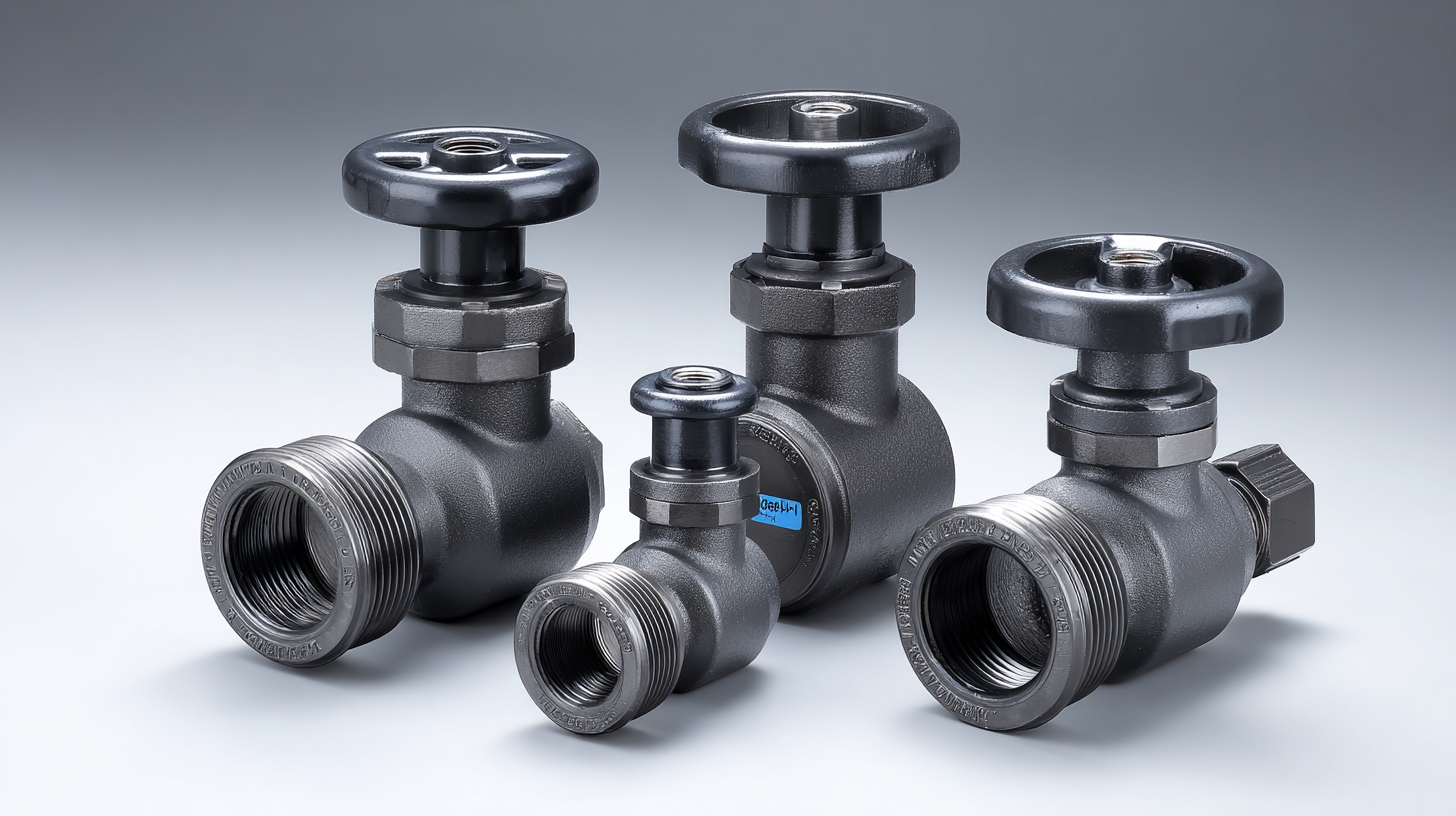+86 19720579616

+86 19720579616

 Zalo
Zalo

In the industrial sector, effective flow control is paramount to operational efficiency, and Din Globe Valves have emerged as a robust solution. According to a recent Market Research Future report, the global valve market is projected to reach USD 105 billion by 2025, driven by increasing demand across various industries such as oil and gas, water treatment, and chemical processing. Din Globe Valves, known for their reliable performance in regulating flow and pressure, play a critical role in these applications. Their design offers significant advantages, including superior sealing capabilities and ease of maintenance, which enhances system reliability and reduces downtime. As industries continually seek optimized solutions to meet stringent regulatory standards and operational demands, the exploration of alternatives to traditional flow control methods becomes essential, with Din Globe Valves standing out for their efficiency and versatility.

 In industrial settings, DIN globe valves play a crucial role in controlling the flow of fluids within pipelines. These valves, designed according to the German Institute for Standardization (DIN) standards, are renowned for their durability and reliability. According to a recent report by the Global Industrial Valve Market, DIN globe valves account for approximately 25% of the global valve market due to their favorable performance characteristics. Their superior longevity and resistance to wear make them an ideal choice for various applications, including oil and gas, water treatment, and chemical processing.
In industrial settings, DIN globe valves play a crucial role in controlling the flow of fluids within pipelines. These valves, designed according to the German Institute for Standardization (DIN) standards, are renowned for their durability and reliability. According to a recent report by the Global Industrial Valve Market, DIN globe valves account for approximately 25% of the global valve market due to their favorable performance characteristics. Their superior longevity and resistance to wear make them an ideal choice for various applications, including oil and gas, water treatment, and chemical processing.
The functionality of DIN globe valves is particularly beneficial in applications requiring precise flow regulation. Unlike other valve types, globe valves provide excellent throttling capability, allowing operators to fine-tune the flow rate efficiently. A study published by the International Journal of Industrial Research highlights that industries utilizing DIN globe valves experience a reduction in energy costs by up to 20%, attributed to their efficiency in managing fluid flow rates. Furthermore, the robust construction of these valves ensures they can withstand high pressures and temperatures, making them indispensable in demanding environments where system integrity is paramount.
When it comes to fluid control in industrial applications, best DIN globe valves offer several key benefits that stand out. These valves are designed for reliable performance and efficiency, making them ideal for managing fluid flow in various systems. One of the primary advantages of DIN globe valves is their ability to provide tight sealing, which minimizes leakage and allows for precise control of fluid pressure. This capability not only enhances operational safety but also contributes to energy efficiency by reducing waste.
**Tips for Optimal Use of DIN Globe Valves:**
To maximize the effectiveness of DIN globe valves, ensure that they are properly sized for your application. Oversizing or undersizing can lead to inefficient operation and increased wear. Regular maintenance is also crucial; inspect seals and seats for wear and tear to maintain their sealing capabilities. Additionally, consider the installation environment—avoiding high-vibration areas can prolong the lifespan of your valves, ensuring long-term reliability in your systems.
Another benefit is their versatility in responding to changes in fluid dynamics. In hydronic systems, for instance, globe valves can be paired with modern controls to transition between constant and variable flow rates, allowing for dynamic balancing. This adaptability not only streamlines operations but can also significantly reduce energy consumption in large-scale industrial settings, leading to cost savings and better overall system performance.
In recent years, the industrial valve market has witnessed significant growth, with a noticeable rise in the demand for DIN globe valves compared to other valve types. According to market analysis, the global industrial valve market is projected to reach a valuation exceeding USD 14.7 billion by 2032, driven primarily by advancements in various sectors including water and wastewater management, which is forecasted to expand at a CAGR of 4.5%. This trend underscores the increasing reliance on globe valves, particularly DIN standards, due to their superior flow control capabilities and reliability in critical applications.
When comparing DIN globe valves to alternatives such as ball and gate valves, their performance characteristics become evident. Globe valves are renowned for their ability to provide precise throttling, making them ideal for applications where flow regulation is essential. In the semiconductor industry, for instance, the ultra-high purity valve market—including globe valves—continues to grow, reflecting a trend towards specifications that prioritize cleanliness and efficiency in processes. With the semiconductor ultra-high purity valves market projected to expand significantly, the effectiveness of DIN globe valves in such specialized applications further enhances their standing against other valve types.
When selecting DIN globe valves for industrial applications, several key factors need to be considered to ensure optimal performance and longevity. Firstly, understanding the specific requirements of your application, such as pressure, temperature, and flow rate, is crucial. DIN globe valves come in various materials and sizes, so selecting the appropriate valve that can withstand the operational conditions while providing reliable performance is essential. For instance, materials like stainless steel are often preferred for their corrosion resistance and durability in harsh environments.
Another important factor to consider is the valve design and configuration. DIN globe valves are available in different types, such as rising stem and non-rising stem designs, each suited for specific operational needs. Additionally, the installation space and accessibility for maintenance should also be evaluated. Proper installation and accessibility could significantly reduce downtime and enhance efficiency in industrial processes, making it vital to select a valve that fits both technical and logistical requirements. By taking these factors into account, you can confidently choose the right DIN globe valves that will maximize the efficiency and reliability of your industrial applications.
When it comes to ensuring the efficient performance of industrial applications, maintaining DIN globe valves is critical. These valves offer robust control over flow properties, but without proper upkeep, they can succumb to wear and operational degradation. According to industry reports, regular maintenance can enhance valve lifespan by up to 30%, greatly reducing replacement costs and downtime.
One key maintenance tip is to routinely inspect the sealing surfaces and seats for wear. Experts recommend using a specialized valve inspection kit to detect any irregularities that could lead to leaks or pressure drops. Additionally, lubricating the valve stem and actuator bi-annually can prevent corrosion and ensure smooth operation. Research indicates that implementing such preventative measures can yield a significant return on investment, as it minimizes the risk of unexpected failures.
Moreover, monitoring the operational environment is essential. Environmental factors like pressure fluctuations and flow turbulence can adversely affect valve performance. Data shows that maintaining optimal conditions can enhance valve efficiency by 25%. By prioritizing these maintenance strategies, industries can maximize the longevity and reliability of DIN globe valves, ensuring seamless operations and cost-effectiveness in their processes.


